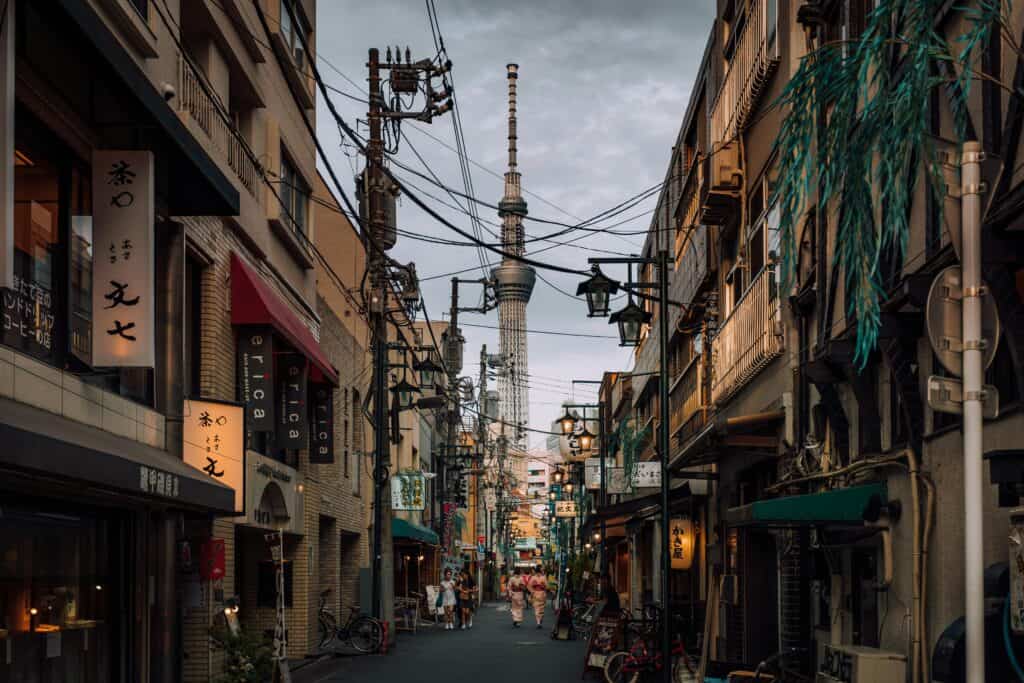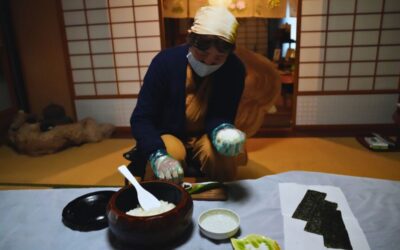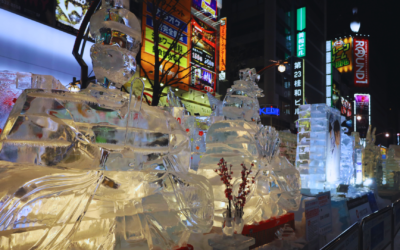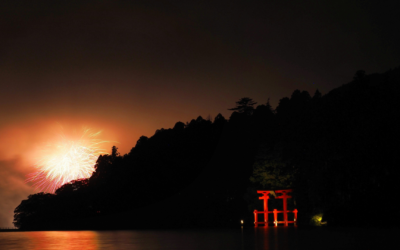Planning a trip to Japan? We’ve got you covered! If you haven’t already, make sure to check out our comprehensive guide on the 60+ travel tips for Japan to get started. Now, let’s zoom in on Tokyo, the heart of this fascinating country.
Why does Tokyo often top the bucket list for visitors to Japan? It’s simple: the city’s unmatched blend of cutting-edge technology, rich history, and unique culture is an irresistible combination.
Whether you’re indulging in the freshest sushi at Tsukiji Market, diving into the eclectic fashion scenes of Harajuku, or immersing yourself in the history and culture at ancient temples like Senso-ji, we’re here to act as your Tokyo travel guide and plan your dream Japan trip.
Buckle up and get ready to dive into the must-know Tokyo travel tips that will make your trip unforgettable!
Travel Planning Tips
Before diving into the nitty-gritty of Tokyo travel tips, let’s take a moment to set the stage. Planning a trip to such a vibrant and sprawling city can be overwhelming, but don’t worry—we’ve got your back.
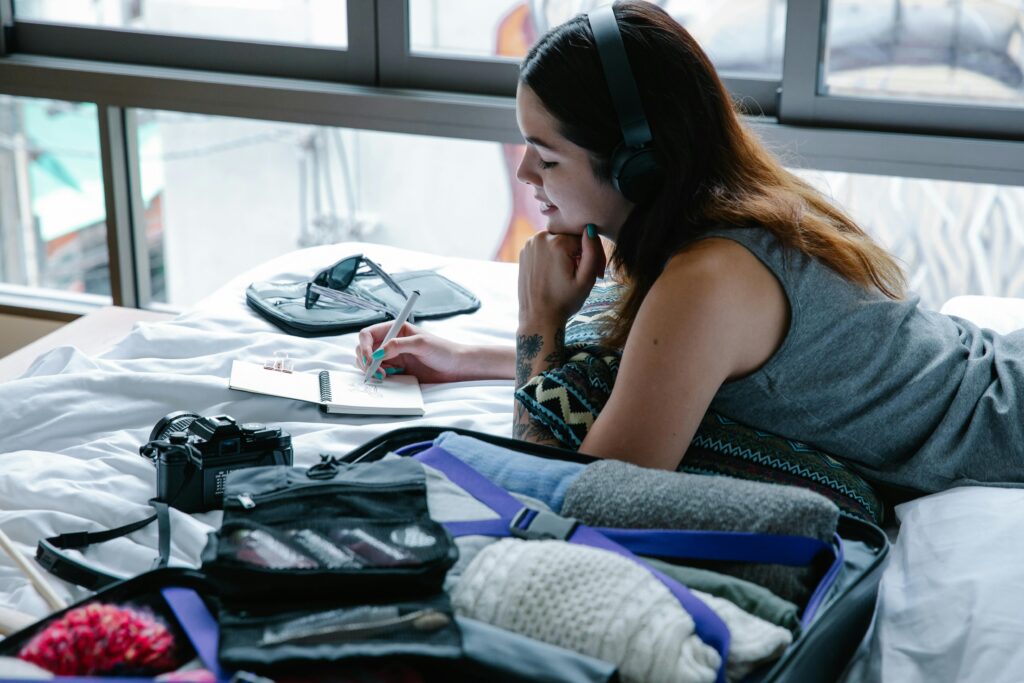
1. Pick the Right Area to Stay
Budget Travellers: Stay in areas like Asakusa or Ueno for more affordable options with easy access to major attractions. Asakusa is famous for the historic Senso-ji Temple, and Ueno boasts the beautiful Ueno Park and its numerous museums.
Luxury Seekers: Opt for upscale neighbourhoods like Ginza or Roppongi for high-end hotels and fine dining. Ginza is known for its luxury shopping, exquisite restaurants, and stylish hotels, while Roppongi offers a vibrant nightlife scene with chic bars, clubs, and cultural attractions.
Cultural Enthusiasts: Choose a traditional ryokan in areas like Yanaka for an authentic experience. Yanaka retains a charming old-town feel, with narrow streets, traditional houses, and a wealth of history. Staying in a ryokan allows you to immerse yourself in Japanese culture, complete with tatami mats, futons, and kaiseki meals.
2. Book Early for Busy Seasons
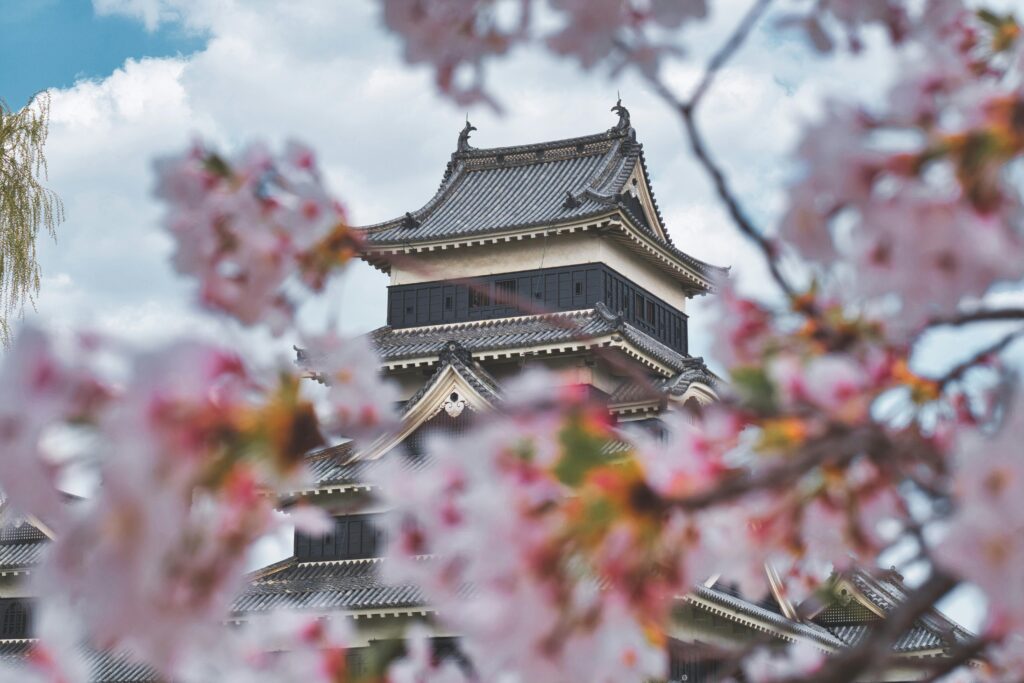
Cherry blossom season, Golden Week, autumn, and the end of year/new year period each has its unique draw but brings with it a higher number of visitors.
Cherry Blossom Season (late March to early April): The blooming of cherry blossoms is a celebrated event across Japan. In Tokyo, spots like Ueno Park and Chidorigafuchi Park become especially crowded with both tourists and locals enjoying hanami (flower viewing parties).
Golden Week (late April to early May): This is a series of four national holidays within one week and one of Japan’s busiest holiday seasons. Many residents take paid time off during this period, leading to packed trains, airports, and tourist spots. Key dates include April 29 (Showa Day), May 3 (Constitution Day), May 4 (Greenery Day), and May 5 (Children’s Day).
Autumn Foliage (mid-November to early December): Similar to the cherry blossom season, autumn brings stunning colors to Tokyo’s many gardens and parks. Popular spots for viewing autumn leaves, including the Rikugien Garden and Meiji Jingu Gaien, can be very packed.
End of Year/New Year Period (late December to early January): New Year (Shogatsu) is Japan’s most important holiday. Many people return to their hometowns, and famous temples in Tokyo, such as Meiji Shrine and Senso-ji, attract millions of visitors for Hatsumode (the first shrine visit of the year).
3. Travel Off-Peak for Fewer Crowds

June (rainy season), for example, welcomes fewer tourists. Generally, lower prices can be expected due to the rainy weather, and it is a quieter time to enjoy Tokyo. The summer months also tend to be less crowded compared to spring and autumn, potentially offering more comfortable pricing and accommodation options.
4. Download Google Maps (Seriously)
Google Maps is highly reliable and accurate in Japan. It provides real-time information on train schedules, platform numbers, and the best routes to your destination.
Simply enter your current location and destination, and Google Maps will offer detailed step-by-step directions, including walking paths within stations. Google Maps is widely trusted by both locals and tourists for its accuracy in Japan. It regularly updates to reflect any changes in train schedules or routes.
Beyond basic directions, Google Maps offers features like offline maps which are a great help when exploring remote areas like the islands of Tokyo or rural outskirts. Learn how to download offline Google Maps here.
5. Add Free Attractions to Your Itinerary

Work in—at least some of—these 30+ FREE things to do in Tokyo in your itinerary. It’s a pretty comprehensive list, but some of my personal favourites are:
- Imperial Palace Gardens: I always find a stroll through the Imperial Palace Gardens to be a refreshing break from the bustling city. It’s free, it’s beautiful, and you can join guided tours that don’t cost a yen!
- Tokyo’s Parks: I’m a big fan of Ueno Park for a leisurely day out—there’s always something happening, and the atmosphere is just vibrant. Yoyogi Park is another favourite, especially on the weekends when you can catch some live performances.
- Asakusa Culture and Tourist Information Center: This place is more than just a resource for visitors; it’s an architectural gem designed by Kengo Kuma. The observatory deck here offers some fantastic views of the city, and best of all, it’s completely free.
- Seasonal Flower Displays: Whether it’s cherry blossoms in spring or ginkgo leaves in autumn, Tokyo’s parks offer some of the best spots to see seasonal flowers.
6. Join a Food Tour or Local Experience
There’s no better way to get under the skin of a place than through its food and the people who know it best. Whether it’s a street food tour, a cooking class with a local chef, or a behind-the-scenes market visit, these kinds of experiences let you discover hidden gems, hear fascinating stories, and pick up tips you’d never find in a guidebook.
Plus, you’ll be supporting small, local businesses while you’re at it — something we’re super passionate about. These experiences align perfectly with the kind of meaningful, community-rooted travel we love to promote. So go on, book that foodie adventure — your taste buds (and your Instagram) will thank you.
Area Tips
Tokyo is a sprawling metropolis with countless neighborhoods, each offering its own unique vibe and attractions. Here are some tips on must-visit areas and hidden gems that will help you make the most of your Tokyo adventure.
7. Don’t Skip the Big-Name Neighbourhoods
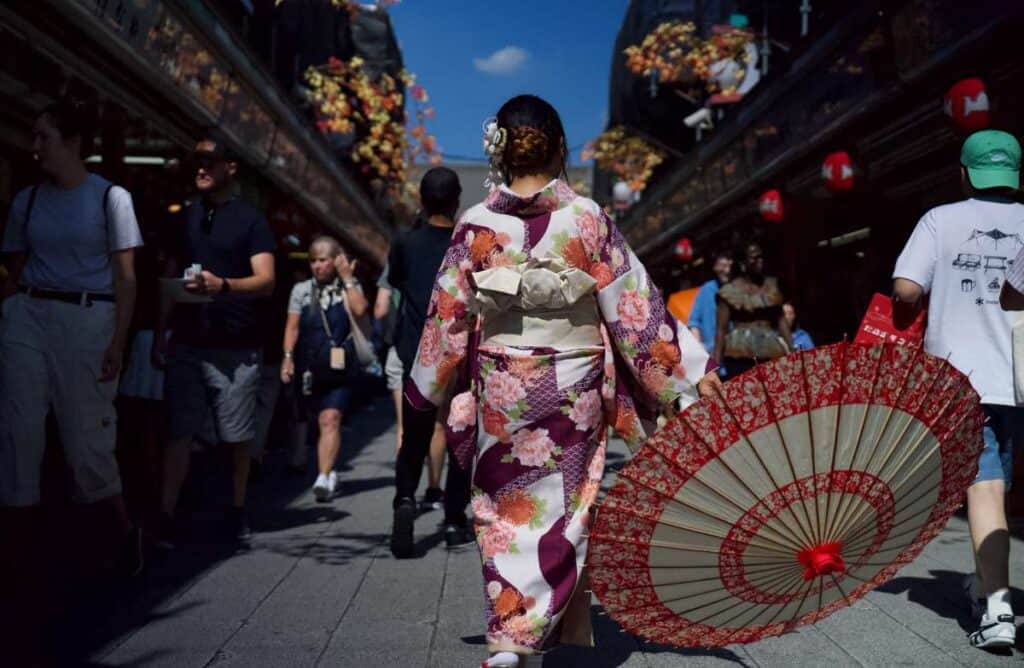
Consider visiting some of the city’s most famous areas and tourist favourites. Even if you’re not a fan of crowds, these incredibly popular spots are worth a visit for various unique reasons:
- Shinjuku: A bustling commercial center known for its shopping, entertainment, and vibrant nightlife. Be sure to check out the panoramic view from the Tokyo Metropolitan Government Building’s observation deck.
- Shibuya: Famous for the iconic Shibuya Crossing and its energetic nightlife, this area is a hub for youth culture and entertainment. Explore the trendy shops, bustling streets, and the beloved Hachiko statue, a popular meeting spot.
- Akihabara: A haven for tech enthusiasts and anime fans, offering a wide array of electronics and themed cafes. Perfect for manga, anime, and gaming aficionados seeking unique merchandise and experiences.
- Harajuku: The heart of youth fashion and quirky trends, known for Takeshita Street’s eclectic shops. Experience Tokyo’s avant-garde fashion scene and vibrant youth culture here.
- Asakusa: Home to the historic Senso-ji Temple and a traditional atmosphere. Enjoy the lively Nakamise Shopping Street leading up to the temple.
- Ginza: Known for luxury shopping, exquisite restaurants, and stylish hotels. It’s an ideal spot for high-end shopping and dining.

8. Also Explore Lesser-Known Local Spots
Looking for a more authentic local vibe? Skip the usual tourist spots and check out these Tokyo neighbourhoods that offer a real slice of city life:
- Nakano: Known for Nakano Broadway, a multi-story shopping complex full of anime, manga, and pop culture stores. It’s a quieter alternative to Akihabara.
- Koenji: A haven for vintage shopping and indie music scenes, perfect for those looking for a unique cultural experience. The area is filled with second-hand shops, record stores, and live music venues, perfect for those seeking a more laid-back and bohemian atmosphere.
- Meguro: Offers a blend of modern and traditional experiences. Visit the Meguro River for beautiful cherry blossoms in spring and enjoy the serene atmosphere.
- Kagurazaka: Explore this old geisha district known for its charming narrow streets and French cuisine. Discover the area’s historic temples, traditional shops, and delightful cafes and restaurants.
- Roppongi: Known for its vibrant nightlife, international dining, and contemporary art museums like the Mori Art Museum.
9. Take a Day Trip Outside Tokyo
If you have enough time, also consider taking these day trips from Tokyo:
- Yokohama: Visit the beautiful waterfront area, the Cup Noodles Museum, and the historic Yokohama Chinatown.
- Kamakura & Enoshima: Discover the Great Buddha, numerous temples, and the scenic Enoshima Island, perfect for a mix of history and nature.
- Kawagoe: Known as “Little Edo” for its well-preserved Edo-period buildings, offering a glimpse into historical Japan. Explore the town’s old clay-walled warehouse district, candy alley, and traditional streets.
- Nikko: Home to the UNESCO World Heritage Site, Toshogu Shrine, and beautiful natural scenery. The area is famous for its stunning temples, waterfalls, and hot springs, providing a refreshing escape from the city.
Culture and Etiquette Tips
Tokyo’s diverse neighborhoods each have their own unique vibe and social norms. Here are some tips to help you navigate the cultural landscape:
10. Dress Smart in Formal Districts
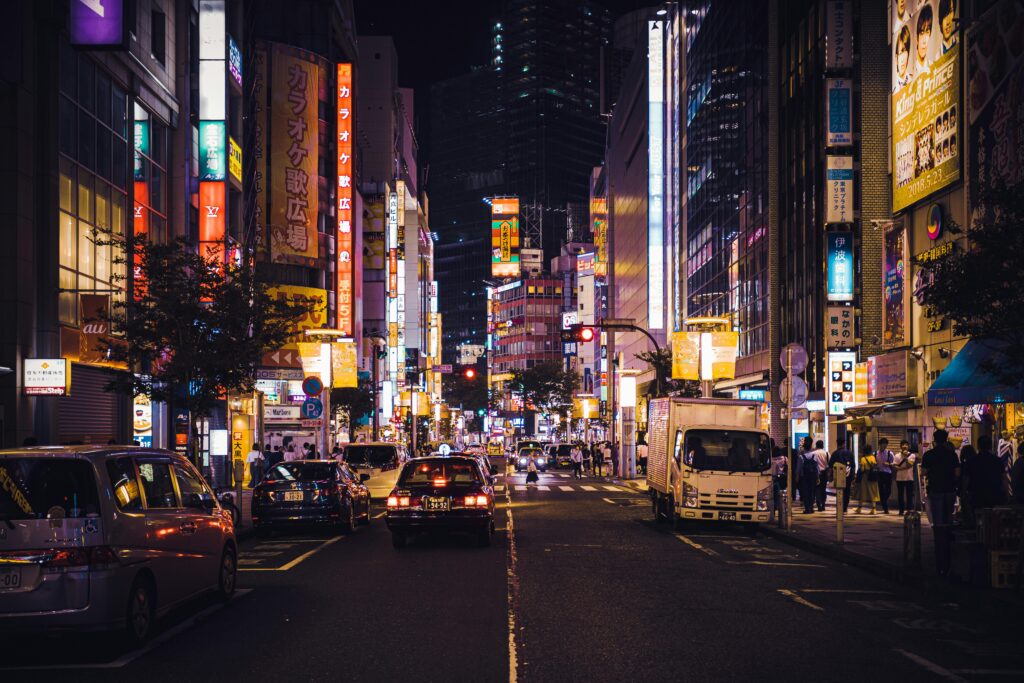
Though it is, of course, not a requirement for tourists, you can blend in more easily by dressing and behaving more conservatively in these formal areas:
- Ginza and Marunouchi: These upscale business and shopping districts are where people tend to be more formal. In these areas, dressing neatly and being mindful of your manners is crucial. Avoid talking loudly, and be especially polite in interactions with shop staff and restaurant employees. Maintain a formal demeanor, avoid using slang, and be punctual for any appointments or reservations.
- Chiyoda (Imperial Palace Area): This area is home to many government buildings and the Imperial Palace, where formality and respect are paramount. When visiting places like the Imperial Palace or nearby shrines, dress modestly and follow all posted rules. Being mindful of your behavior in this area reflects well on you and shows respect for Japan’s cultural heritage.
11. Keep It Casual in Trendy Areas
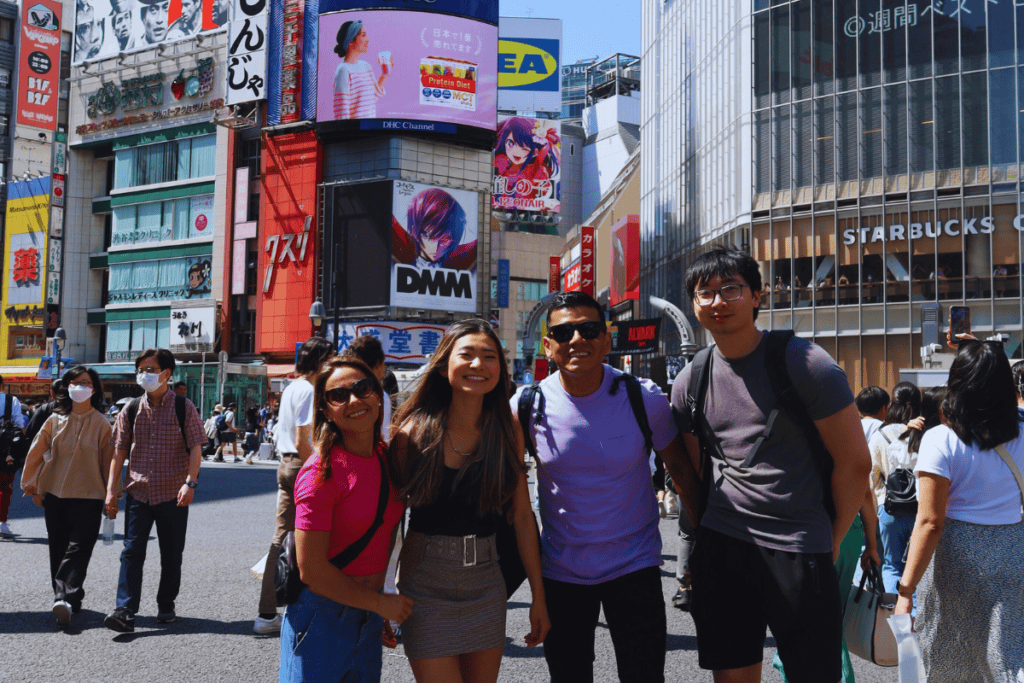
Good manners are always a requirement when travelling, but you can let your hair down a bit more in these Tokyo areas that are more casual and youthful:
- Shibuya: Known for its bustling streets and youth culture, Shibuya has a more relaxed atmosphere. While basic politeness is always expected, the dress code is more casual, and you can be a bit more expressive in your behavior. It’s common to see people wearing trendy and casual clothing. Feel free to express yourself, but still respect public decorum (e.g., avoid being excessively loud or disruptive).
- Harajuku: Famous for its eclectic fashion and youthful energy, Harajuku is where you can see people dressed in unique, often avant-garde styles. This is a place where individuality is celebrated, so feel free to dress creatively. However, respect personal space and avoid making too much noise in residential areas.
- Shinjuku: A bustling area where casual attire is common. It’s a lively district with a mix of everything, from skyscrapers to small alleyways with hidden spots for a great night of drinking.
Tips Related to Transportation and Getting Around

Tokyo can be an overwhelming city for first-time visitors due to its vast size, busy atmosphere, and complex transportation system. However, with the right preparation and a few practical tips, you can navigate the city’s trains and other related transportation with ease and confidence.
12. Get an IC Card (Suica/PASMO)
One of the first things you should do when you arrive in Tokyo is to get an IC card, such as a Suica or PASMO. These rechargeable smart cards can be used on most trains, buses, and even for purchases at convenience stores and vending machines.
Having an IC card will save you time and hassle, allowing you to travel seamlessly across the city without needing to buy individual tickets for each journey.
13. Avoid Rush Hour if You Can
Try not to get caught in the notorious Tokyo rush hour, which typically falls between 7:30 AM and 9:00 AM in the morning, and from 5:00 PM to 7:00 PM in the evening.
During these times, trains can become packed with commuters heading to and from work. Use Google Maps to check real-time train schedules and crowd levels. The app can suggest less crowded routes or times if your schedule is flexible.
14. Know Which Lines Get Crowded
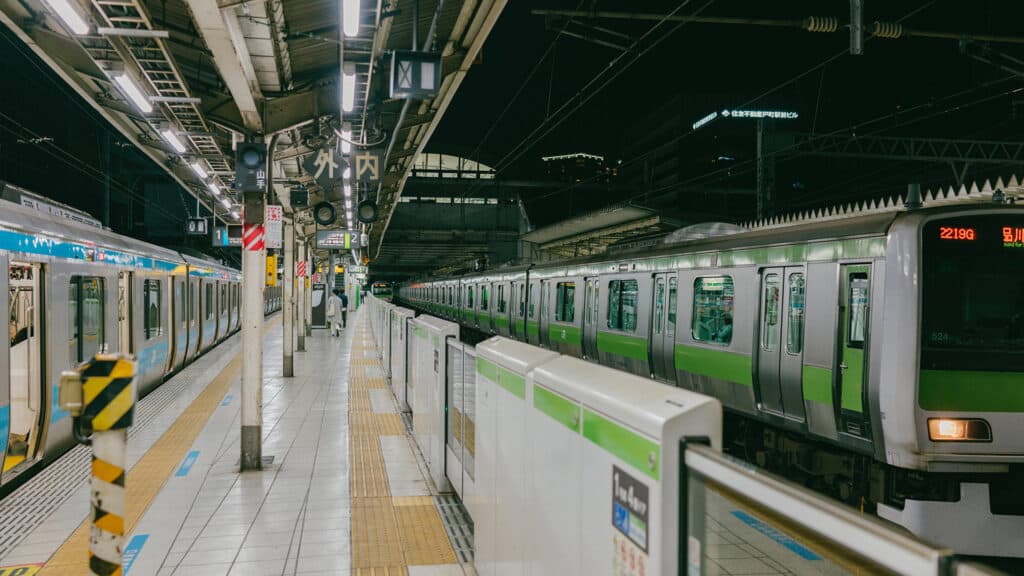
Also know in advance that these specific train lines and stations can get crowded:
- Yamanote Line: This circular line is one of the busiest, connecting major districts like Shinjuku, Shibuya, Ikebukuro, and Tokyo Station. Expect heavy crowds, especially at Shinjuku Station, which is one of the busiest train stations in the world.
- Chuo Line (Rapid Service): This line runs through key areas such as Tokyo Station, Shinjuku, and Kichijoji. It’s heavily used by commuters traveling from the western suburbs into the city center.
- Tokyo Metro Ginza Line: Connecting Asakusa and Shibuya, this line passes through important business districts like Ginza and Shimbashi, making it very crowded during peak times.
- Tozai Line: Known for its extreme crowding during rush hours, the Tozai Line connects eastern Tokyo suburbs with central areas like Nihombashi and Otemachi.
- Hibiya Line: This line connects key business districts such as Roppongi and Hibiya, and can get quite crowded, especially during evening rush hours.
- Odakyu Line: A major commuter line running from Shinjuku to suburban areas like Machida and Odawara. Expect crowding at Shinjuku Station.
- Keio Line: Another major line starting from Shinjuku, serving western Tokyo suburbs. Shibuya and Shinjuku stations are particularly congested.
- Seibu Shinjuku Line: Connecting Seibu Shinjuku Station with Tokorozawa, this line is also heavily used by commuters during peak times.
15. Navigate Rush Hour Like a Local

If you do find yourself stuck in Tokyo rush hour, navigate it like a pro by going with the flow of commuters — keep moving and avoid blocking pathways on busy platforms and trains. Stand on the left side of escalators to let others pass on the right, especially in crowded stations. If you’re travelling in the morning, consider using the Women-Only Cars for a safer and more comfortable ride. And try to travel light; carrying minimal luggage or bags will make it way easier to move through packed spaces and hop on and off trains quickly.
16. Try Cycling Around the City
Use bicycle rentals for a flexible travel option. Exploring Tokyo by bicycle can be an incredibly enjoyable way to see the city. Here are some popular options for your cycling adventures:
- Docomo Bike Share: This widely-used bike-sharing service has numerous docking stations throughout Tokyo. It’s convenient for short trips and casual rides.
- How to Use: Register online or through the app, then use your membership card or a PIN to unlock the bike. Google Maps can help you find the nearest docking station and plan your cycling route.
- Hello Cycling: Another popular bike-sharing service with extensive coverage across the city. This service is user-friendly and accessible.
- How to Use: Download the Hello Cycling app to locate, reserve, and unlock bikes. You can pay via the app using various payment methods.
- Tokyobike Rentals: If you prefer a more traditional rental experience, Tokyobike offers stylish and comfortable bikes for daily rental.
- How to Use: Visit the Tokyobike shop in person to rent a bike. They provide maps and recommendations for scenic cycling routes around Tokyo.
When renting a bike, it’s important to follow a few basic safety rules and cycling etiquette. Always ride on the left side of the road and obey all traffic signals. Stick to designated bike lanes when you can, and be extra careful around pedestrians if you’re on a shared path. Even though helmets aren’t required by law, it’s still a good idea to wear one for safety. And don’t forget to park only in designated areas — leaving your bike in the wrong spot could lead to fines or it getting impounded.
17. Use Taxis for Short Trips
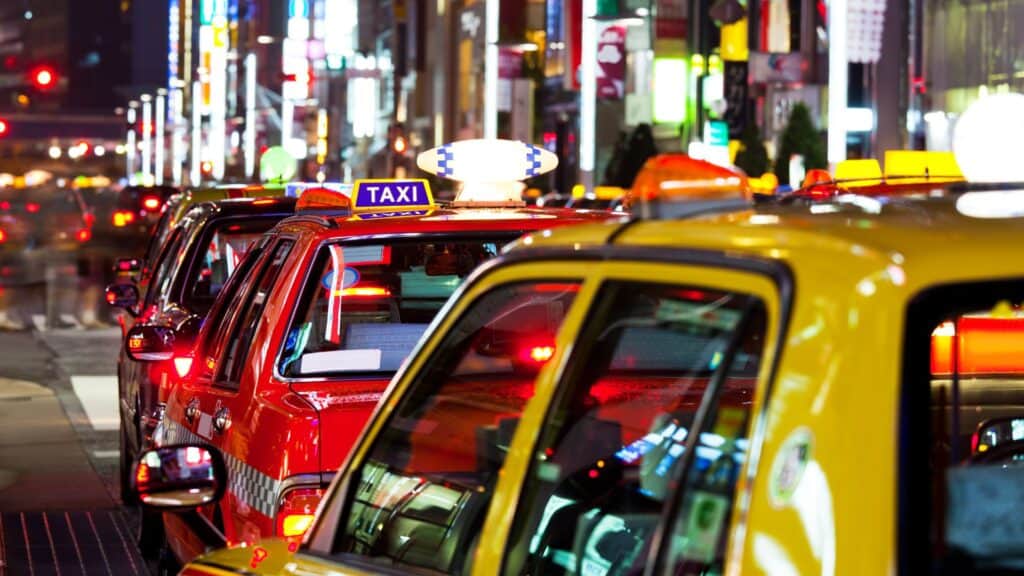
Taxis in Tokyo are known to be on the pricier side, so they’re best saved for short trips, late-night journeys when trains have stopped running, or the occasional travel emergency. That said, they’re incredibly reliable, safe, and easy to use — so don’t stress if you need to grab one.
You can check estimated fares using Google Maps, which is super handy for planning. Ride-hailing apps like Uber do exist in Tokyo, but honestly, it’s often quicker and just as reliable to grab a taxi the traditional way — especially in busy areas. To tell if a taxi’s available, look for a red-lit sign in the front window or on the dashboard that usually has the symbol 空車, which means the taxi is free. If you see that, you’re good to flag it down.
If you prefer using an app, JapanTaxi (also linked with Google Maps) is a great local option that works much like Uber. Most taxis now accept cashless payment too, so you can tap your Suica or PASMO card, or pay with a credit card, making the whole experience smooth and tourist-friendly.
18. Consider a Transport Pass
Tokyo has a range of transportation passes that can make getting around the city way more convenient and budget-friendly — especially if you’re planning to explore multiple areas in a short time.
One popular option is the Tokyo Subway Ticket, which gives you unlimited access to both the Tokyo Metro and Toei Subway lines. It comes in 24-hour, 48-hour, and 72-hour versions depending on the length of your stay and how much you want to squeeze in. These passes are ideal for tourists and are available at Narita and Haneda airports, major subway stations, and even online if you prefer to prep ahead.
Another good option is the Tokyo Combination Ticket, which offers unlimited rides for one day across JR East trains, Tokyo Metro, and Toei Subway lines. It’s perfect for a packed day of sightseeing using various rail systems, and it saves the hassle of buying individual tickets. Both options help streamline your travel and keep things stress-free while exploring the city.
That said, unless you really don’t fancy walking much and plan to hop on loads of trains throughout the day, these passes might not be totally worth it. If you plan your trip well and stick to exploring one part of Tokyo per day — like just doing East Tokyo, for example — you’ll probably only need to take 2–3 trains max. In that case, the cost of individual tickets might actually work out cheaper, so it’s worth thinking ahead before splashing out on a pass.
Packing Tips
Packing for Tokyo requires a bit of strategic planning. In this section, we cover packing tips to ensure you’re well-prepared for your adventure in this dynamic city.
19. Pack for the Season
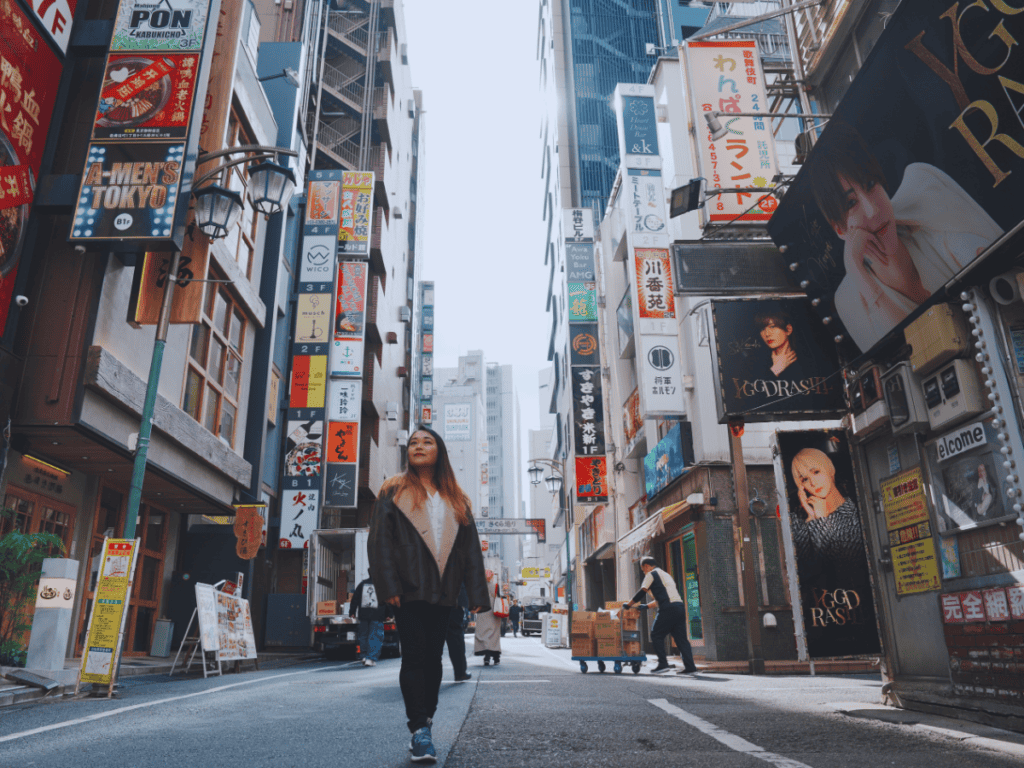
Packing smart is key when visiting Tokyo, especially since the weather shifts quite dramatically throughout the year.
In spring (March to May), the temperature is generally mild, but it can be a bit all over the place — one day’s warm, the next has a surprise shower. Bring layers like a light jacket or cardigan, and don’t forget an umbrella or raincoat, as rain isn’t uncommon.
Summer (June to August) is hot, humid, and intense. You’ll want breathable clothes like cotton t-shirts, shorts, and dresses. Also, a portable fan and a hat can be lifesavers.
In autumn (September to November), the weather is more stable and super pleasant, but layers are still your best friend — a light jumper and a jacket will get you through the day.
Winter (December to February) gets chilly, even if it doesn’t snow often. Pack sweaters, a heavy coat, gloves, and a scarf, especially if you plan to be out walking around a lot.
20. Bring a Light Layer for AC
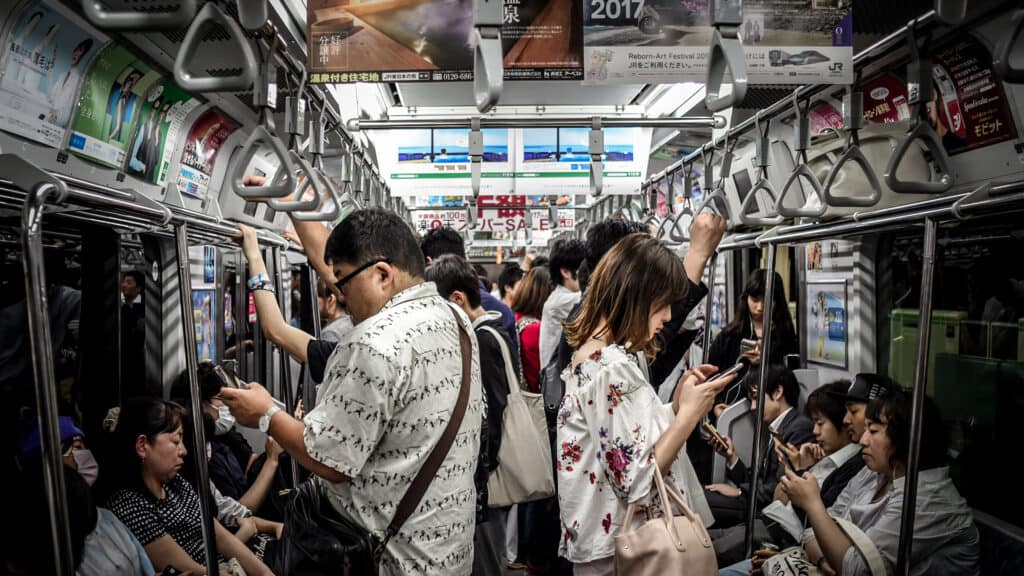
It might sound strange, but even during Tokyo’s sweltering summer months, trains can feel icy thanks to the air conditioning being cranked up. Locals are used to it, but if you’re not expecting it, it can catch you off guard — especially if you’re dressed for 30°C heat. That’s why it’s smart to keep a light cardigan or sweater in your bag so you can stay warm and comfy while commuting between stops or heading back to your accommodation after a long day of sightseeing.
21. Carry a Compact Umbrella
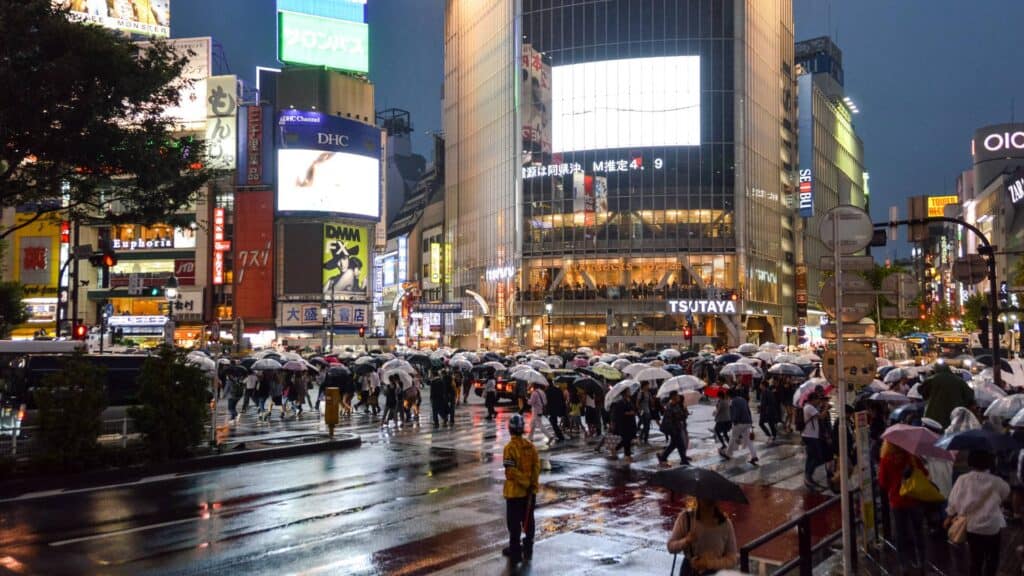
Tokyo weather can turn on a dime, particularly during the rainy season (June to mid-July) and typhoon season (late summer to early autumn). It might be sunny one minute and pouring the next. To avoid getting soaked unexpectedly, always carry a compact, foldable umbrella with you. It barely takes up any space in your bag, and trust me — you’ll be glad you have it when a sudden downpour hits just as you’re leaving a café or crossing Shibuya.
22. Pack Comfy Walking Shoes
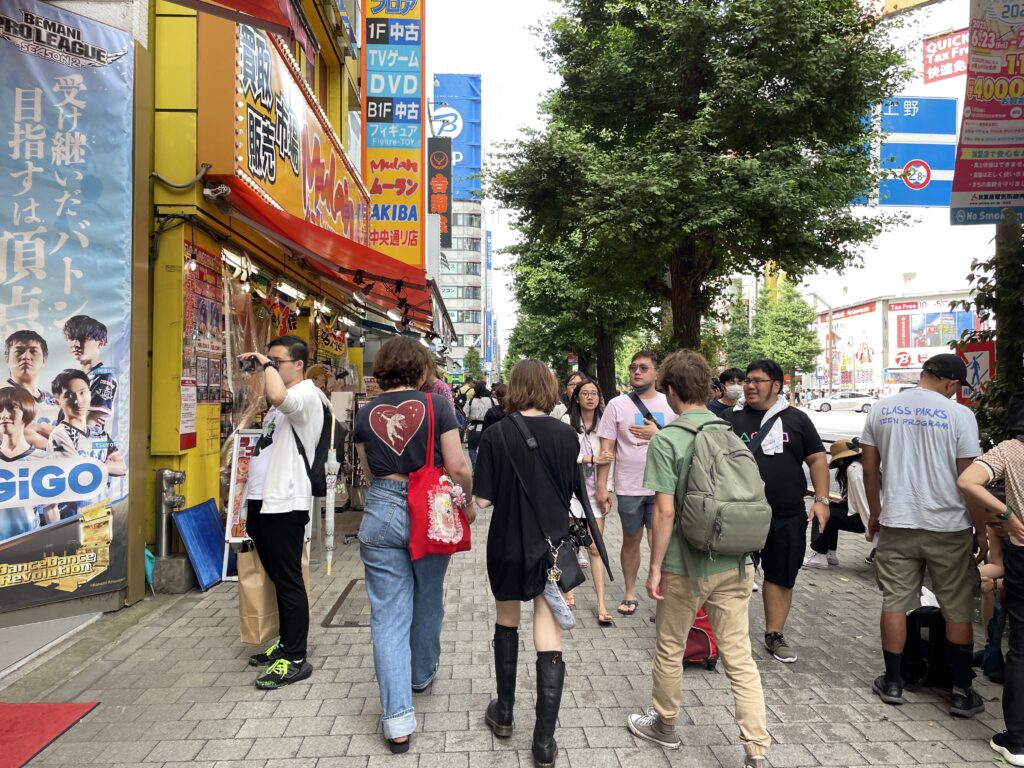
Tokyo is a city best explored on foot, so comfortable walking shoes are a must. You’ll be walking a lot in Tokyo — between huge train stations, sprawling neighbourhoods, and all those must-visit shops, shrines, and side streets. A comfy pair of walking shoes is an absolute must. Trainers or cushioned flats are perfect for everyday exploring.
If you’re planning to dine somewhere fancy or see a show, it’s also a good idea to pack a slightly dressier pair. That said, don’t stress too much — Tokyo’s pretty relaxed when it comes to dress codes, and many nice restaurants are totally fine with clean, casual attire including sneakers.
Tips for After Arriving in Tokyo

Arriving in Tokyo is an exciting moment, but can also be daunting. To help you settle in quickly and start your adventure smoothly, here are tips for your first few hours in the city.
23. Know How to Get to Tokyo from Haneda

Haneda Airport is super convenient and well-connected to central Tokyo, with a few great options depending on your budget and destination. One of the fastest routes is the Tokyo Monorail, which takes you from Haneda to Hamamatsucho Station in just about 13 minutes.
From there, you can transfer to the JR Yamanote Line or other lines to reach your final stop. It costs around ¥490 one way, with trains running every 3–5 minutes during peak hours and every 10 minutes off-peak.
Another solid choice is the Keikyu Line, which gets you to Shinagawa Station in roughly 11 minutes, where you can also transfer to the Yamanote Line. This option is even cheaper, at around ¥300 per ride, with trains every 4–5 minutes during busy times.
If you’d prefer not to deal with transfers or you’ve got luggage, limousine buses are a relaxing and direct alternative. These buses connect Haneda with major areas and hotels around Tokyo, including Shibuya, Shinjuku, and Roppongi. Prices vary depending on where you’re going — usually between ¥600 and ¥1,200 — and the service is frequent, especially during the day.
And of course, if you’re arriving late or just want door-to-door convenience, taxis are available 24/7 right outside the terminals. Just know that this option is significantly pricier, with rides into central Tokyo typically ranging from ¥5,000 to ¥10,000 depending on traffic and destination.
24. Know How to Get to Tokyo from Narita
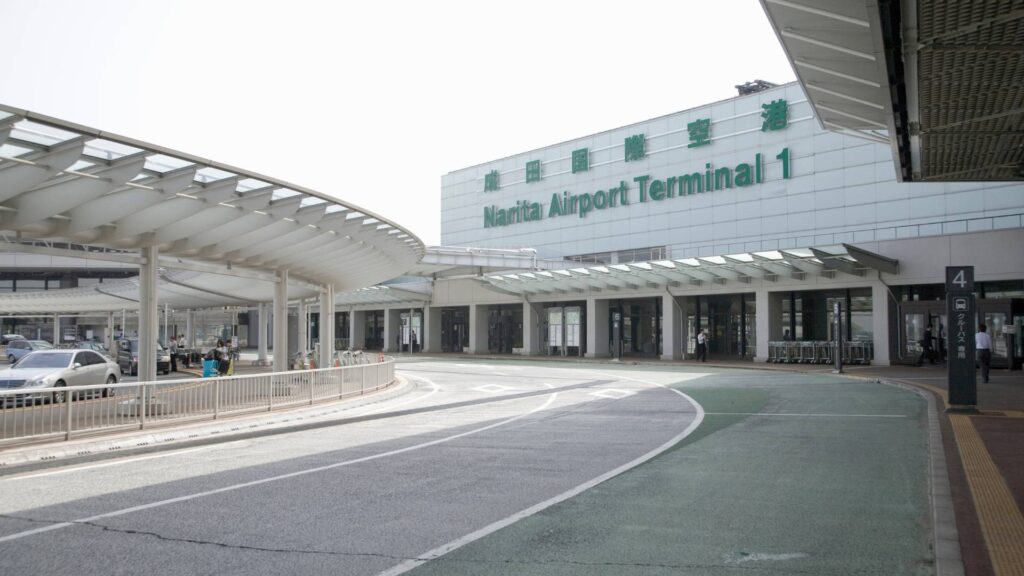
Narita is a bit further out from central Tokyo, but there are still several easy ways to get into the city. One of the most popular options is the Narita Express (N’EX), operated by JR East. This train offers a smooth, comfortable ride straight into key stations like Tokyo, Shinjuku, and Shibuya, with the trip to Tokyo Station taking about 55 minutes. A one-way ticket will set you back around ¥3,070 for a standard seat, and trains run roughly every 30 minutes during peak periods and hourly at other times.
Another quick and convenient option is the Keisei Skyliner, which connects Narita to Ueno Station via Nippori in about 36 minutes. A one-way ticket to Nippori costs around ¥2,520, and trains run every 20 to 40 minutes. If you’re not in a rush and want to save money, the Access Express (Keisei Main Line) is a great budget-friendly choice. It takes about 65 minutes to reach Asakusa and costs just ¥1,280, with trains running every 20 minutes.
There are also limousine buses and shuttles that connect Narita with major hotels and neighbourhoods across Tokyo, including Tokyo Disney Resort. Fares typically range from ¥1,000 to ¥3,200 depending on your destination, and buses run frequently throughout the day.
Lastly, taxis are available, but because of the longer distance, they’re the most expensive option. A ride into central Tokyo can cost anywhere between ¥20,000 and ¥30,000 — not ideal unless you’re splitting the fare or arriving late with loads of luggage.
25. Best Spots to Exchange Currency
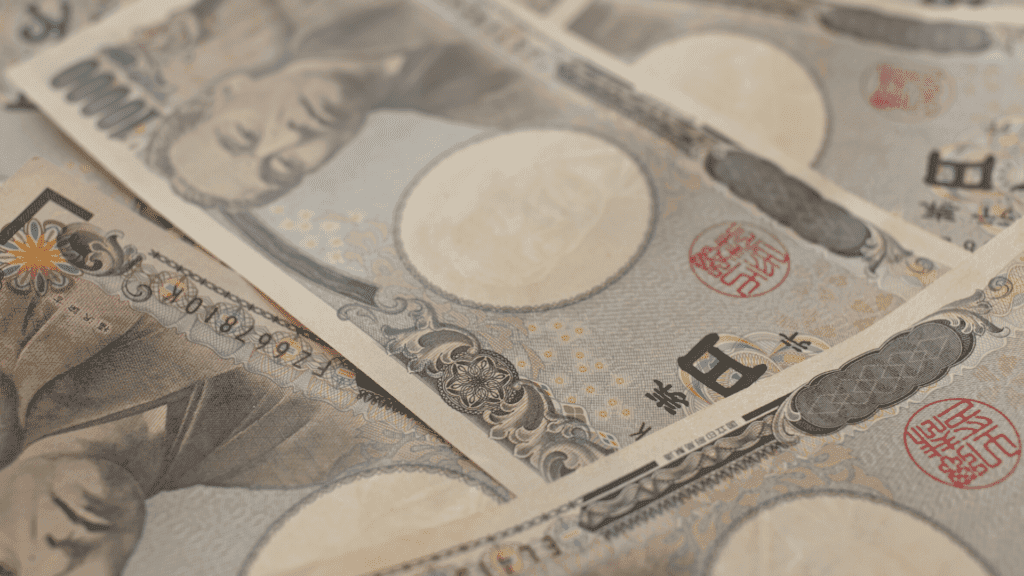
Exchanging currency in Tokyo is pretty straightforward if you know where to go. While it’s super convenient to swap cash at Haneda or Narita airports, the exchange rates there tend to be slightly less favourable than what you’ll find in the city. If you’re looking for better rates, ATMs at 7-Eleven, Lawson, or Japan Post Bank are great options. They accept most international cards and let you withdraw yen directly at competitive rates, which is often just as good (if not better) than using a currency exchange counter.
For even more value, check out currency exchange centres in areas like Shinjuku, Shibuya, or Ginza — places with a lot of foot traffic and tourists. Shops like Travelex or smaller local exchange counters often offer better deals than what you’d get at the airport or a hotel.
Speaking of hotels, many do offer currency exchange services, which can be handy in a pinch, but they usually don’t have the best rates. If you’re planning to exchange a larger amount of cash, it’s worth waiting until you’re in the city to do it.
Start Your Tokyo Adventure

There you have it—25 essential tips to help you navigate Tokyo like a pro. From the bustling streets of Shibuya to the historic charm of Senso-ji, these tips will help you make the most of your vacation in Tokyo.
Remember, this guide is just the beginning. We also offer comprehensive guides for other amazing destinations in Japan, such as Osaka and Kyoto. Each city has its unique attractions and experiences waiting to be explored.
Tokyo awaits, so buckle up because unforgettable memories are about to be made. Safe travels!

